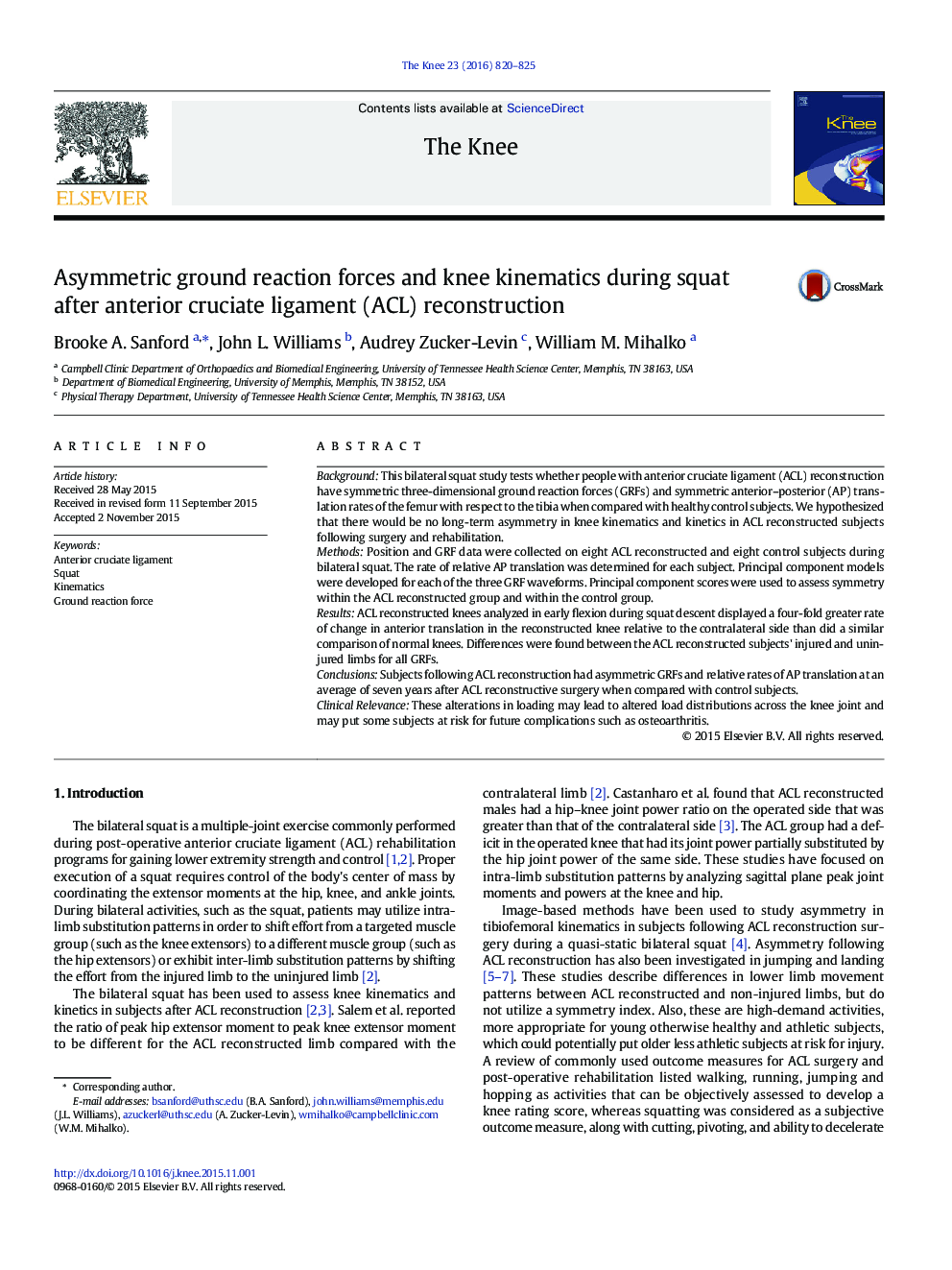| کد مقاله | کد نشریه | سال انتشار | مقاله انگلیسی | نسخه تمام متن |
|---|---|---|---|---|
| 4077118 | 1410900 | 2016 | 6 صفحه PDF | دانلود رایگان |

• We measure relative AP translation of the femur with respect to the tibia in squat.
• We measure three dimensional ground reaction forces during the squat.
• ACL reconstructed subjects differ in rate of relative AP translation to controls.
• ACL reconstructed subjects have asymmetric ground reaction forces.
• Control subjects displayed symmetric ground reaction forces.
BackgroundThis bilateral squat study tests whether people with anterior cruciate ligament (ACL) reconstruction have symmetric three-dimensional ground reaction forces (GRFs) and symmetric anterior–posterior (AP) translation rates of the femur with respect to the tibia when compared with healthy control subjects. We hypothesized that there would be no long-term asymmetry in knee kinematics and kinetics in ACL reconstructed subjects following surgery and rehabilitation.MethodsPosition and GRF data were collected on eight ACL reconstructed and eight control subjects during bilateral squat. The rate of relative AP translation was determined for each subject. Principal component models were developed for each of the three GRF waveforms. Principal component scores were used to assess symmetry within the ACL reconstructed group and within the control group.ResultsACL reconstructed knees analyzed in early flexion during squat descent displayed a four-fold greater rate of change in anterior translation in the reconstructed knee relative to the contralateral side than did a similar comparison of normal knees. Differences were found between the ACL reconstructed subjects' injured and uninjured limbs for all GRFs.ConclusionsSubjects following ACL reconstruction had asymmetric GRFs and relative rates of AP translation at an average of seven years after ACL reconstructive surgery when compared with control subjects.Clinical RelevanceThese alterations in loading may lead to altered load distributions across the knee joint and may put some subjects at risk for future complications such as osteoarthritis.
Journal: The Knee - Volume 23, Issue 5, October 2016, Pages 820–825